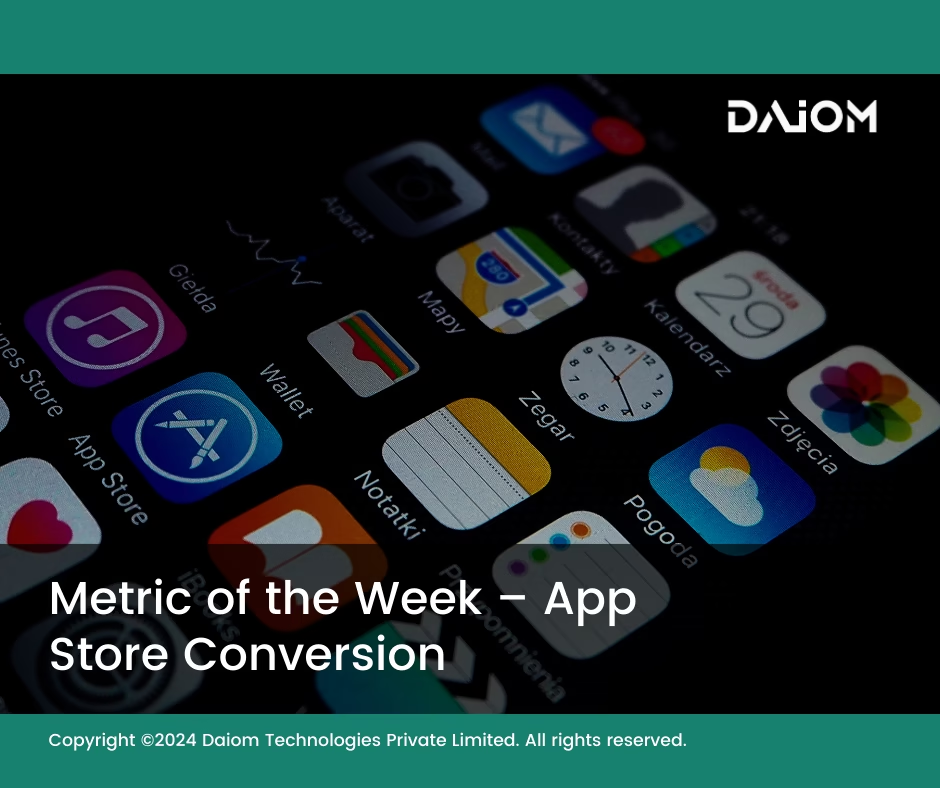Most brands invest heavily in marketing to drive users to their app store page—running ads, sending emails, and promoting across multiple channels. But getting users to the app store is only half the battle. The real challenge is conversion.
Only 26% of users who land on an app store page actually install the app. That means a majority of potential users leave without downloading. The reason? Poor App Store Optimization (ASO).
ASO plays a crucial role in improving install rates without increasing ad spend. A well-optimized store page can boost conversion rates by up to 30%, ensuring that marketing efforts translate into actual app installs.
This guide covers: The app install journey and where brands lose users, The impact of ASO on conversion rates and acquisition costs, Actionable strategies to optimize your app store page for maximum installs & more.
By improving app store conversion, businesses can reduce wasted ad spend, increase organic growth, and improve overall user acquisition efficiency.
A well-optimized app store listing can significantly boost conversion rates, turning more visitors into loyal users.
Table of Contents
1. The App Install Journey
The advantage of having an app is significant—it allows brands to increase engagement, drive repeat usage, and build direct relationships with customers. As brands grow, getting users to install their app becomes a top priority.
However, driving app installs is not just about running ads. It’s a multi-step process, and each step plays a crucial role in optimizing user acquisition.
Step 1: Capturing User Interest (Marketing Campaigns & Nudges)
Before users download an app, they need to see a reason to do so. This starts with effective marketing across multiple channels.
Where do users see the app install prompt?
- Website: Banner ads, pop-ups, or embedded links encouraging downloads.
- Email & SMS: Personalized messages nudging users to install the app.
- Social Media Ads: Campaigns on platforms like Facebook, Instagram, TikTok, and LinkedIn.
- Retargeting Ads: Users who visit the website but don’t install the app can be retargeted with ads.
- Referral Programs: Incentivizing existing users to invite friends.
At this stage, the goal is to create awareness and spark interest, leading users to click on the app download link.
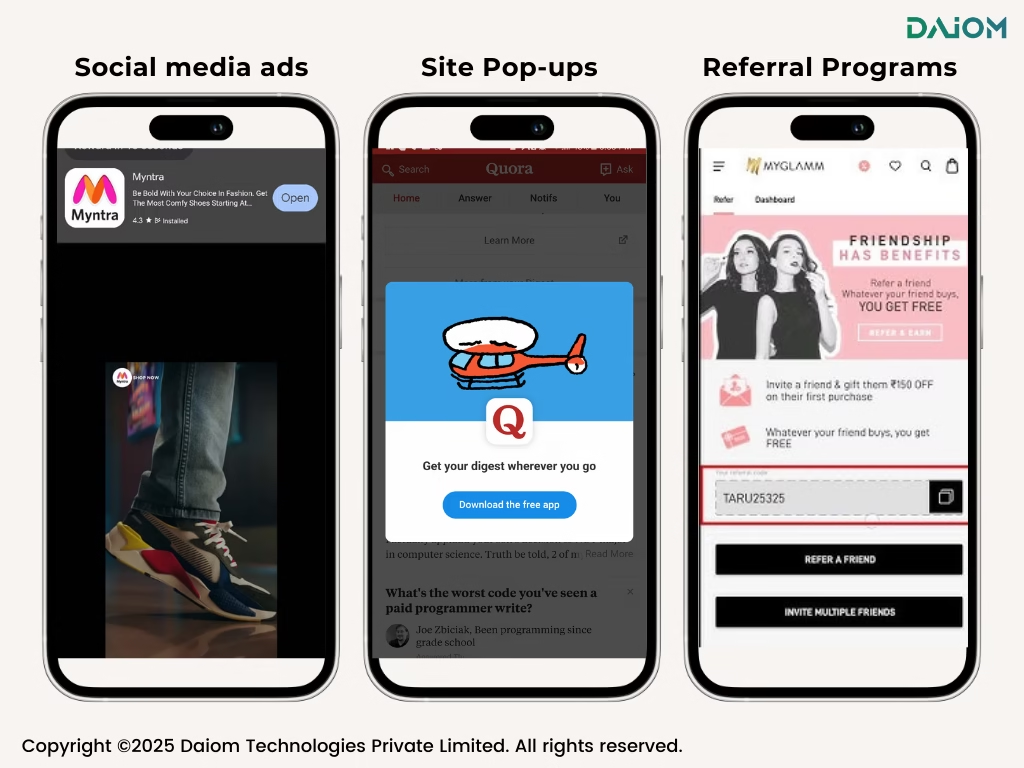
Step 2: Driving Users to the App Store
Once a user clicks on an app install ad or link, they land on the Google Play Store (for Android) or the Apple App Store (for iOS).
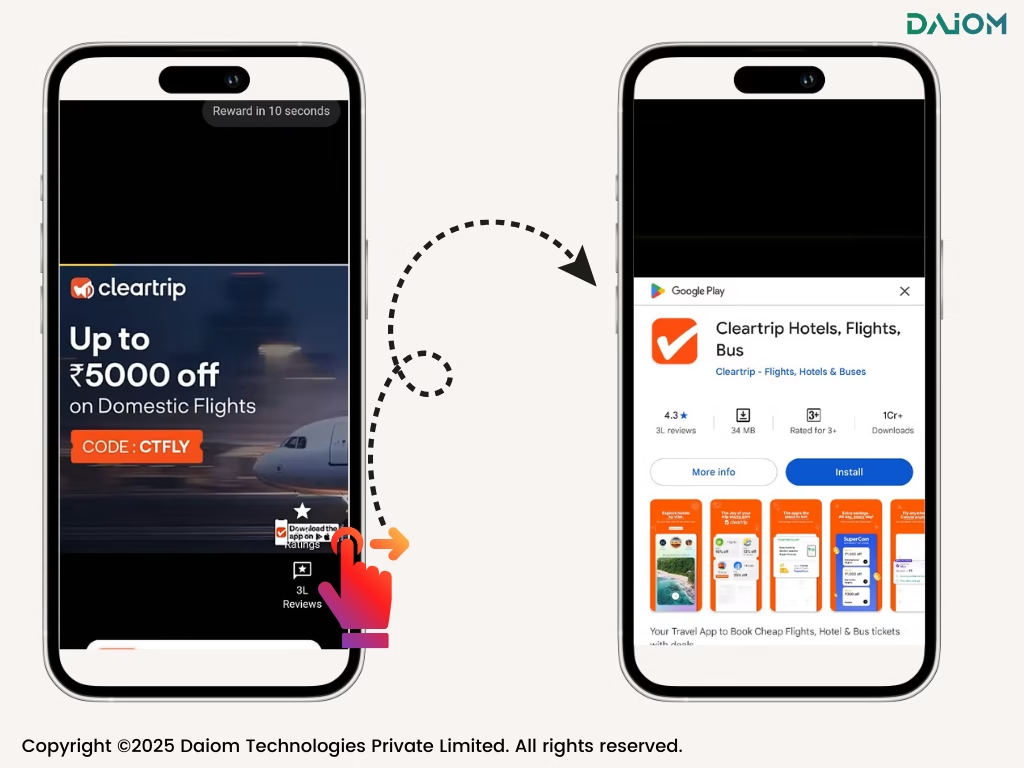
This step is critical because it’s where users decide whether to install the app or not. Many brands assume that if a user reaches this stage, they will automatically download the app. But that’s not always the case!
Step 3: App Store Conversion & Install Completion
After landing on the app store page, users make their final decision: install or leave.
This is where App Store Optimization (ASO) plays a critical role. Brands that invest in ASO can significantly increase their install rates without increasing marketing spend.
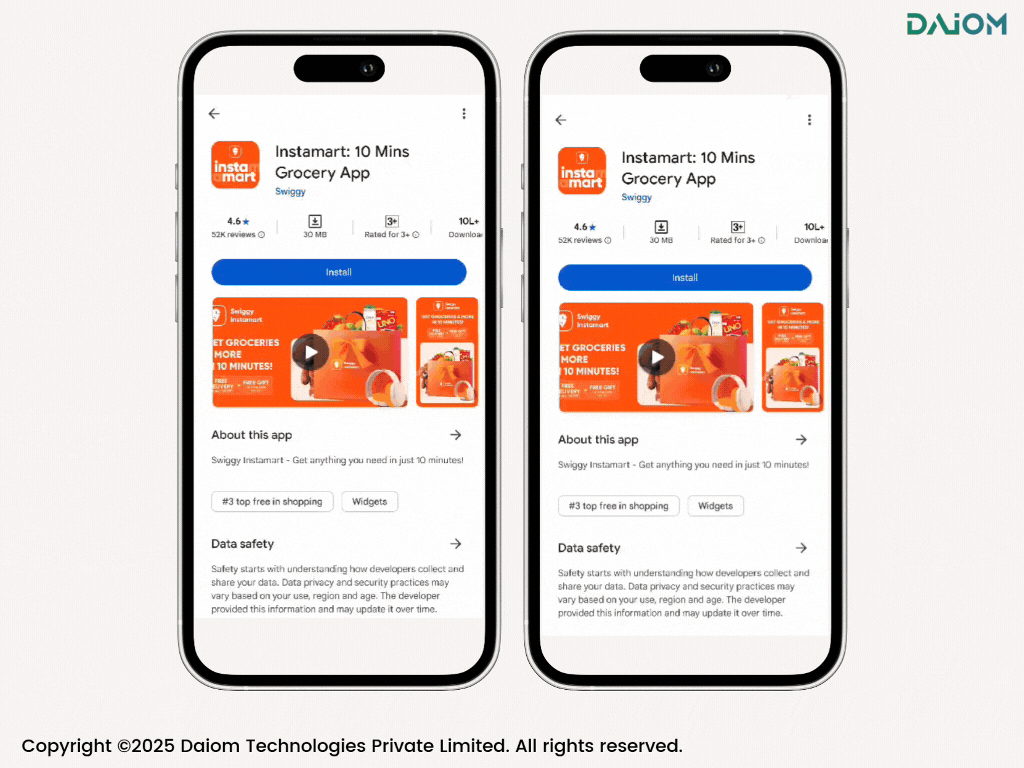
2. Why Does App Store Optimization Matter?
Businesses invest time, money, and effort into driving users to their App Store listing. Whether through paid ads, website promotions, or organic search, the goal is to convert visitors into app users. But what happens if the listing isn’t optimized?
2.1. Wasted Effort and Resources
If users land on an unappealing or poorly ranked App Store listing, they won’t download the app. This means all the marketing efforts—whether through ads, influencer campaigns, or SEO—go to waste.
2.2. Missed Growth Opportunities
Every lost download isn’t just a missed user acquisition—it’s a missed long-term customer. Apps help businesses build lasting relationships, but that only happens when users download and engage with them. A lost download means losing a potential repeat customer, impacting retention and revenue.
For example, Swiggy Instamart boosts app installs with ASO—optimized keywords, compelling visuals, and strong ratings.
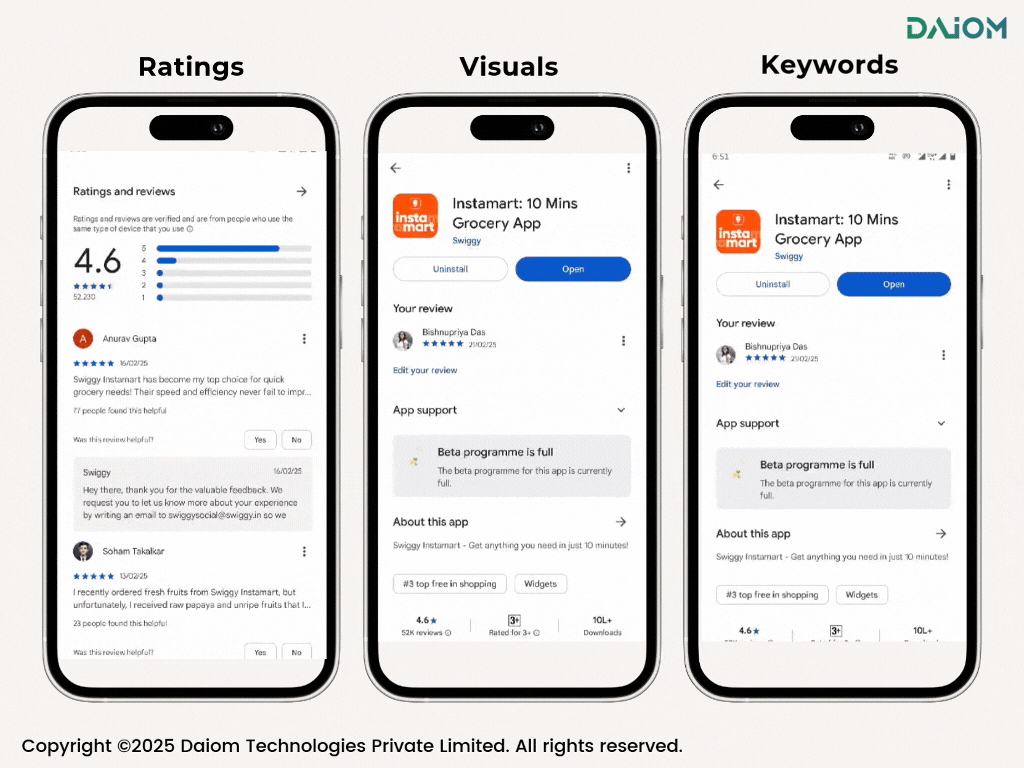
To retain users, it leverages AI-driven push notifications, referral rewards, seamless onboarding, and social commerce. By combining visibility and engagement tactics, Meesho converts visitors into long-term users, driving organic growth and loyalty in India’s e-commerce space.
2.3. Higher Acquisition Costs
Without ASO, businesses rely more on paid ads to acquire users. But even with high ad spend, if users don’t convert due to a weak listing, acquisition costs skyrocket while returns remain low. Optimizing the listing ensures that marketing efforts lead to actual installs, improving overall cost efficiency.
By focusing on App Store Optimization (ASO)—enhancing visibility, improving ratings, and optimizing listing elements—businesses can maximize conversions, reduce wasted spend, and strengthen user retention.
3. What is App Store Conversion?
Play Store conversion refers to the percentage of users who visit your app’s Google Play Store page and install the app. It helps measure how effective your store page is in convincing visitors to download your app.
Read more – How Can Ecommerce Brands Decide When To Launch Their Own App?
3.1 How is App Store Conversion Calculated?
The formula for calculating Play Store conversion is:
(Number of Installs ÷ Number of Store Page Visitors) × 100
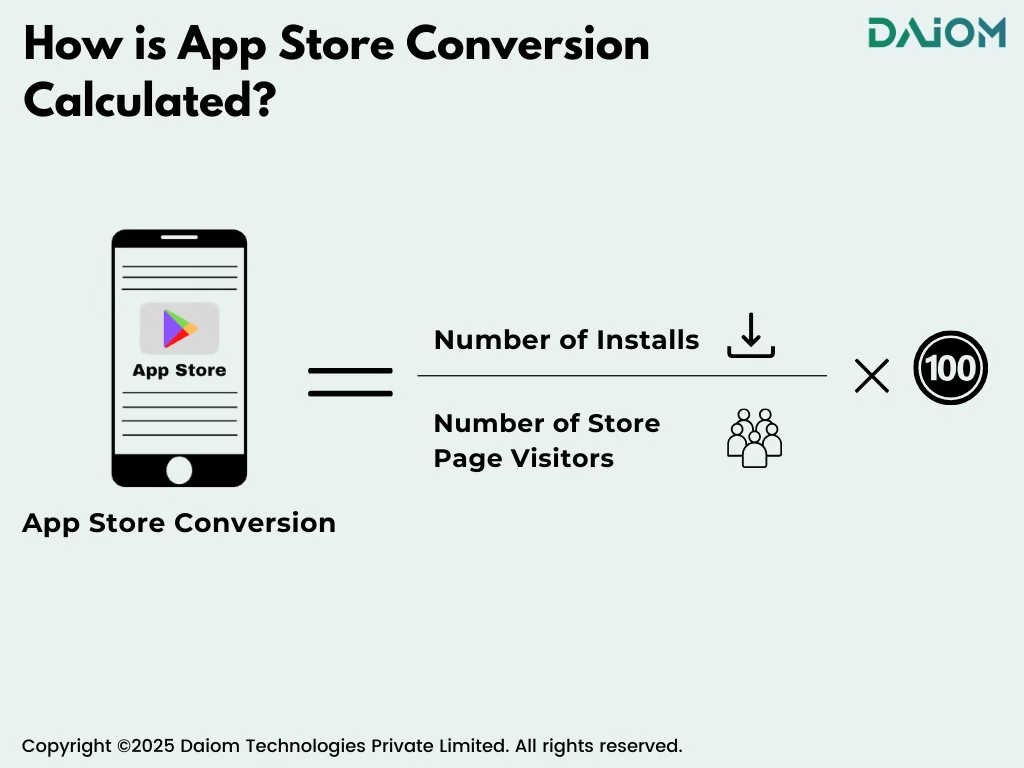
Example:
If 1,000 users visit your app’s Play Store page and 200 of them install the app, the conversion rate would be:
(200 ÷ 1,000) × 100 = 20%
4. Key Factors Impacting App Store Conversion
Driving users to an app is only half the battle. Getting them to install it is where App Store Optimization (ASO) plays a crucial role. Two key factors determine an app’s ability to convert potential users are:
4.1 App Store Visibility & Ranking
Most users discover apps through search. If an app doesn’t rank well in App Store search results, it simply won’t be found.
App Store algorithms consider factors like keywords, category relevance, download velocity, and user engagement to determine an app’s ranking. Higher visibility means a greater chance of attracting organic users without additional ad spend.
4.2 App Store Listing Quality
Even if users find an app, they won’t always download it.
That decision depends on the quality of the App Store listing, which includes:
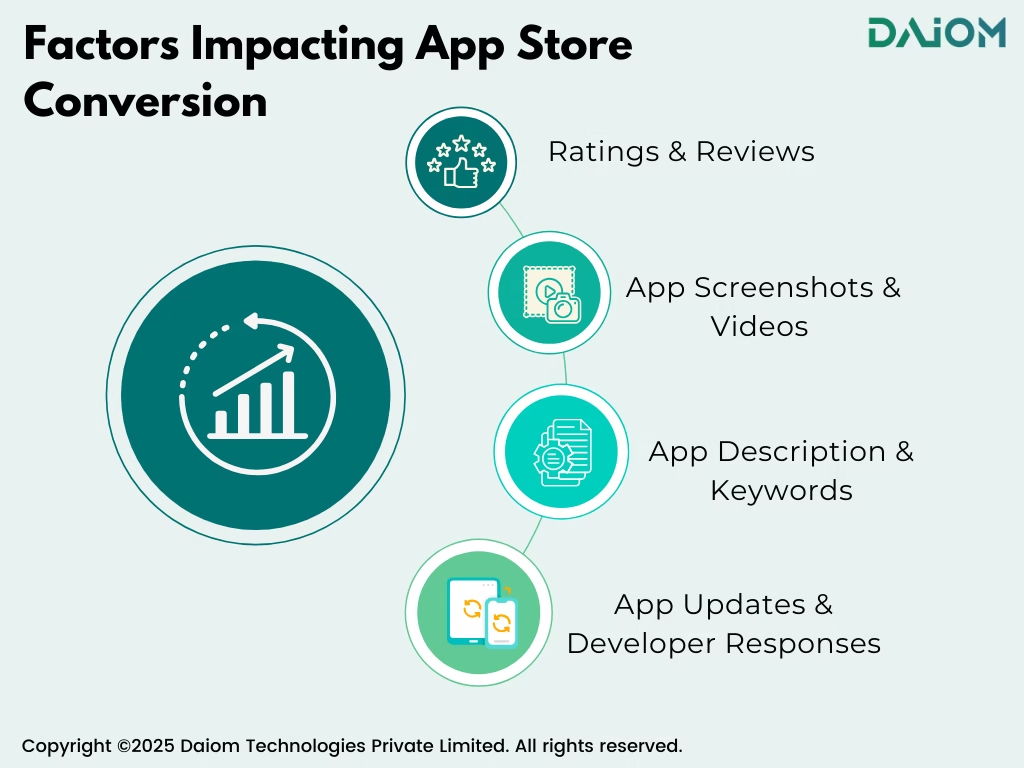
- Ratings & Reviews – Users trust feedback from others. A low rating or negative reviews can discourage downloads, while actively responding to reviews builds credibility.
- App Screenshots & Videos – Visuals provide a first impression of the app’s interface, features, and benefits. Engaging, high-quality images can increase conversion rates significantly.
- App Description & Keywords – A clear, well-written app description helps users understand the app’s value. Using the right keywords improves search rankings.
- App Updates & Developer Responses – Frequent updates signal that an app is well-maintained, and responding to user comments shows that the business values customer feedback.
5. How to Improve App Store Conversion Rates?
While many focus on app install campaigns, a key part of success lies in App Store Optimization (ASO). To maximize conversions, brands must ensure their app store presence is compelling, clear, and optimized for user engagement. Here’s how:
- Leverage ASO Tools: Use platforms like Google Play Console to analyze user behavior and optimize conversion rates.
- Optimize Visuals: Include high-quality images, videos, and GIFs to give users a preview of the app.
- A/B Test Creatives: Experiment with different screenshots, descriptions, and videos to see what converts best.
- Use Trust Signals: Display awards, endorsements, or high-profile reviews to boost credibility.
Understand Cost Per Install (CPI): One of the most important performance indicators for app installs is CPI. It depends on two main factors:
- The effectiveness of your creatives (ads, banners, videos, etc.)
- The efficiency of your app store conversion process
Even if your ad campaigns drive users to the app store, a poor conversion rate means wasted ad spend. Optimizing ASO helps lower acquisition costs while improving install rates.
6. What is a Good Play Store Conversion Rate?
Conversion rates vary by industry, but here’s a general benchmark:
- 35%+ → Excellent (Highly optimized ASO & strong brand recognition)
- 10-20% → Good to Average (Room for improvement in visuals & messaging)
- Below 10% → Needs improvement (Potential issues with ASO, branding, or user trust)
Brands should continuously track and optimize their app store performance to maintain high conversion rates.
With 65% of downloads coming from organic search, ASO is no longer optional—it’s a necessity for sustained app growth.
McKinsey
7. Conclusion
Optimizing for Google Play ranking requires a combination of strong metadata, high user engagement, stable performance, and visually compelling assets.
A well-optimized app increases visibility, conversion rates, and overall success on the platform. Continuously monitoring and iterating based on ASO insights ensures long-term growth and higher rankings.
If you’d like to discuss how we can help enhance and optimize your app store conversion, we’d be happy to set up a consultation call. Feel free to reach out to us at alibha@daiom.in
For more informative content and blog, follow and stay tuned to DAiOM.
Subscribe to our NEWSLETTER!


